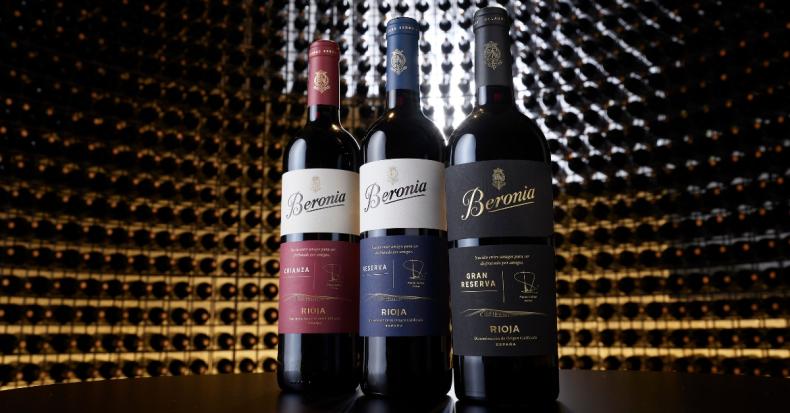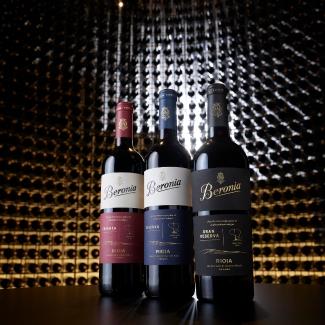Welcome to Beronia’s Guide To The Wines Of Rioja. In this guide, you will learn more about vintage Rioja and the blends of this world-class wine region.
We hope you will find this guide informative and enjoyable. If you’d like to know more about Beronia Rioja, then please sign up for our newsletter or join the conversation on social media. You can find us on Facebook and Instagram.
What makes Rioja wines unique compared to other Spanish wines?
There are a number of things that make the wines of Rioja unique when compared to other Spanish wines. Some of these are historical such as the influx of winemakers from Bordeaux when phylloxera devastated French vineyards. Then there are the physical and climatic advantages of La Rioja. The mix of soils, altitudes, and microclimates that means Rioja has arguably the greatest range of high-quality vineyard sites in all of Spain. Add to this the reasonably wide choice of vines – everything from classics such as Tempranillo and Garnacha to rare, and exciting Graciano wines, and experimental plantings of Cabernet Sauvignon, and winemakers are blessed with an awful lot of flexibility when crafting their wines.
Money plays a huge part in any wine region’s fortunes too. Wineries are expensive to build and run, vineyards require constant attention, and barrels – especially the oak barrels favoured in Rioja – are vital, but pricey pieces of kit. Thanks to Rioja’s longstanding reputation as a world-class wine region, winery owners have had a ready market for their wines and investment has flooded in. This means that today the wines of Rioja are better than they have ever been, with a consistency of quality that would have been unthinkable even fifty years ago.
What are the different classifications of Rioja’s wines?
One of the things that makes Rioja’s wines unique is the way its wines are classified or graded. This easy-to-understand system is based on how long the wine has been aged before it’s released. These classifications are shown on the label as:
· Joven – this literally means young, and the wines usually don’t see any oak. These are great, easy-drinking Riojas that are full of fruit and zest.
· Crianza – with a year in barrel (six months for the whites) and a year in bottle, wines like Beronia’s Crianza offer a perfect balance of black and red fruits with a lovely creamy tone. In great years such as 2019 or 2020, they can age and develop over several years.
· Reserva – typically only made in good years, they must be aged for at least three years, with at least one year in oak barrels. These are serious wines that can age beautifully.
· Gran Reserva – only made from the best grapes in the best years, for many this is Rioja’s crowning glory. They must be aged for a minimum of two years in oak and three in the bottle, giving wines that are full of spiced black fruits, with touches of orange peel, cranberry and vanilla. They can age magnificently over decades and develop a smoky, supple, mellow character.
· Gran Anada – a classification for sparkling wines. These must be on their ‘lees’ (yeast
and other bits left over after the second fermentation in the bottle that makes them fizzy) for three years.
What is the role of the Consejo Regulador in Rioja?
The Consejor Regulador del vino de Rioja is the rule maker for the region. It’s a body that creates the system that underlie the classification of wines, define which grapes can be used, and the yields that can be generated, and even the size of the oak barrels that can be used. Quality-focused, they are also Rioja’s ‘brand guardians’ and do everything in their power to ensure that the highest standards are upheld.
Rioja now has some of the strictest winemaking rules in the world. The Consejor Regulador looks to keep pace with changing circumstances and has been instrumental in shaping Rioja’s response to climate change.
What is the role of the "bodega" in Rioja winemaking?
The word ‘bodega’ has different meanings depending on the place and context. A bodega can refer to a local grocery store or a wine shop, while in the case of Jerez where Sherry is made, it refers to a warehouse where wines are stored and aged. In Rioja, it can refer to somewhere wines are stored, but it’s now most commonly associated with a producer, as in Bodegas Beronia.
How does the Rioja wine region contribute to Spain's wine exports?
Leaving aside the importance of Rioja to wine lovers (a world without Rioja? That’s no world at all!) it’s economically important too. It accounts for around 21% of Spain’s wine production, with over 500 wineries producing more than 350m bottles which are valued at 1.5bn Euros per year. Owing to its overall focus on quality over quantity, Rioja’s production remains modest when compared to some other world-class regions. Bordeaux, for example, produces over 500m bottles per year.
What’s the difference between ‘classic’ and ‘modern’ Rioja producers?
Despite its ancient origins, Rioja has always been a dynamic, innovative region that welcomes new ideas, particularly if they can improve the quality of the wines. Over the years many Rioja producers have been labelled as either ‘classic’ or ‘modern’. While there’s no exact definition for these, classic producers are ones that are associated with only using classic grape varieties such as Tempranillo and for their extensive use of oak, in both making and ageing their wines. Modern producers tend to be more experimental in terms of the varieties they plant and whether, like Beronia, they use organic methods to grow the grapes.
Today, the difference between classic and modern producers has become blurred as quality-focused producers look to take advantage of classical and modernist techniques in order to create the best wine.
Are all Rioja wines red?
When most people think of the wines of Rioja, they tend to think of red wines. Given over 91% of grapes planted in Rioja are red and 90% of Rioja wines are red, it’s a fair assumption to make. Rioja comes in many styles though:
· Tinto Rioja – ranging from light and fresh to big, bold, juicy red wines that are full of fruits of the forest, with a lovely spicy tone
· Blanco Rioja – peach, apple and apricot flavours are often found in white Riojas, as is creamy vanilla if they have been aged in oak
· Rosé Rioja – also known as rosado Rioja - strawberries, raspberries, citrus fruits, and peaches are often found in this joyous style of Rioja
· Espumoso Rioja – these fantastic sparkling wines offer apple, pear, melon, and nectarine fruit with a creamy, yeasty flavour
Is white Rioja a good wine?
White Rioja, or Blanco Rioja, only accounts for around 10% of Rioja’s production, but the quality of white Rioja is often excellent. It can be made from grapes such as Malvasia, Garnacha Blanco, and Viura, or as is in the case with Beronia’s White Rioja, a blend of Viura and Garnacha. In terms of style, wines from classic producers tend to be oaked, with a nutty, slightly oxidised character. Modern producers tend to excel with white Rioja as they either reduce or eliminate oak and let the wine’s natural zest and freshness come through. It’s this latter style of Rioja Blanco that has driven a surge in interest with sales rising by nearly 6% per annum according to Riojawine.com.
Is rosé Rioja a good wine?
Rosé Rioja, or Rosado Rioja, is another success story for the region. With Rioja’s two leading red grape varieties – Tempranillo and Garnacha – both lending themselves perfectly to the production of world-class rosé wines, rosé Rioja’s popularity has soared. In 2022 exports grew by 24.84% as more and more wine lovers fell for the combination of brightness, complexity, and sheer joy that wines like the Beronia Rosé Rioja offer.
Can I visit Rioja?
Wine tourism has become hugely popular in recent years. Wine lovers are increasingly taking an interest in where their wines come from and how they are made, and while guides like this are great, there’s nothing quite like visiting Rioja for yourself to learn even more. In 2021 over 460,000 people visited Rioja, bringing in over €100m according to the Consejo Regulador del Vino de Rioja.
While we may be biased, we think that Rioja is one of the best regions in the world for wine tourism. Rioja is a beautiful region with stunningly varied countryside, picturesque towns, and an abundance of award-winning wineries.
At Beronia we’re happy to welcome visitors. Come and see us in our home in Ollauri and you can explore our new sustainable winery, one that’s been awarded LEED – Leader in Energy Efficiency and Sustainable Design - and WfCP – Wineries for Climate Protection – certification. You can learn more about our range of wines, how they are made, and of course, enjoy a glass or two of Beronia Rioja! To find out more about visiting Beronia, please get in touch




